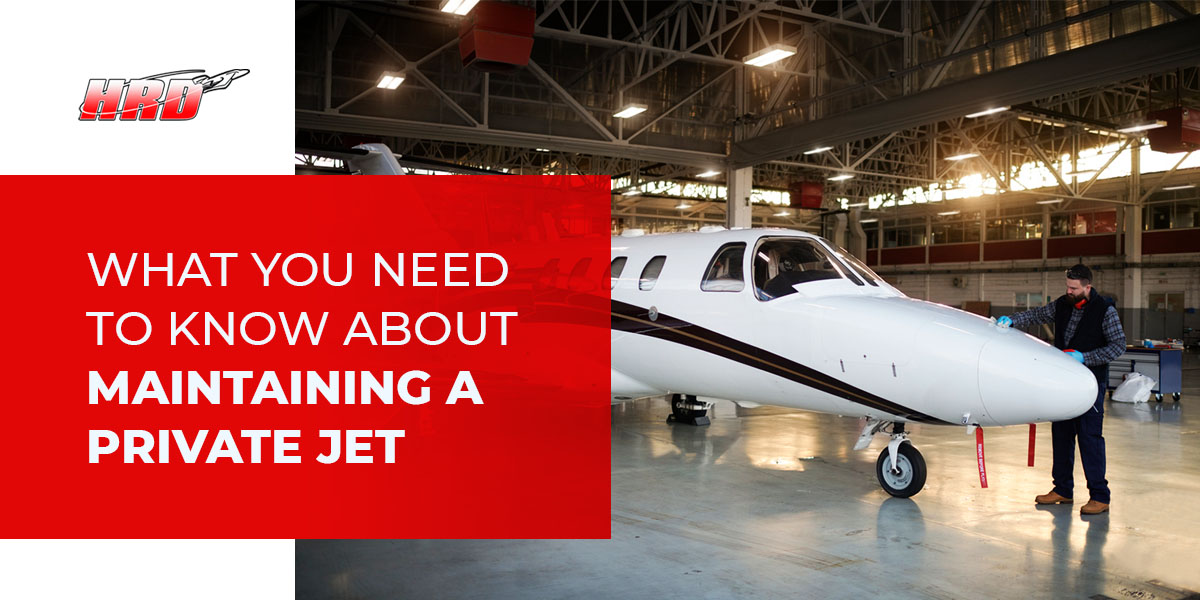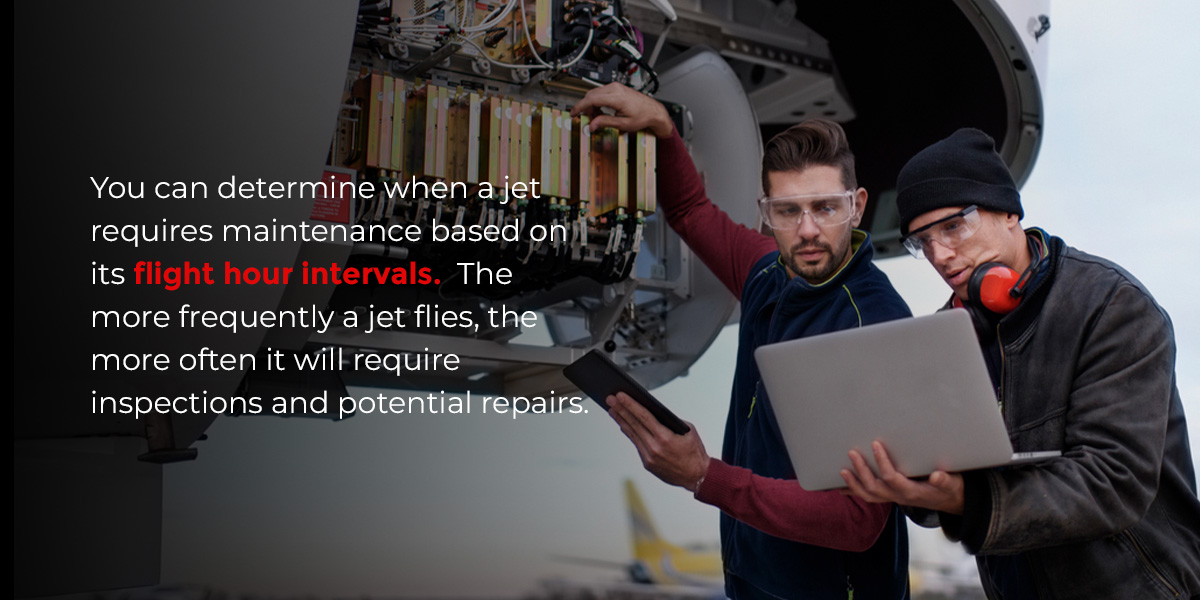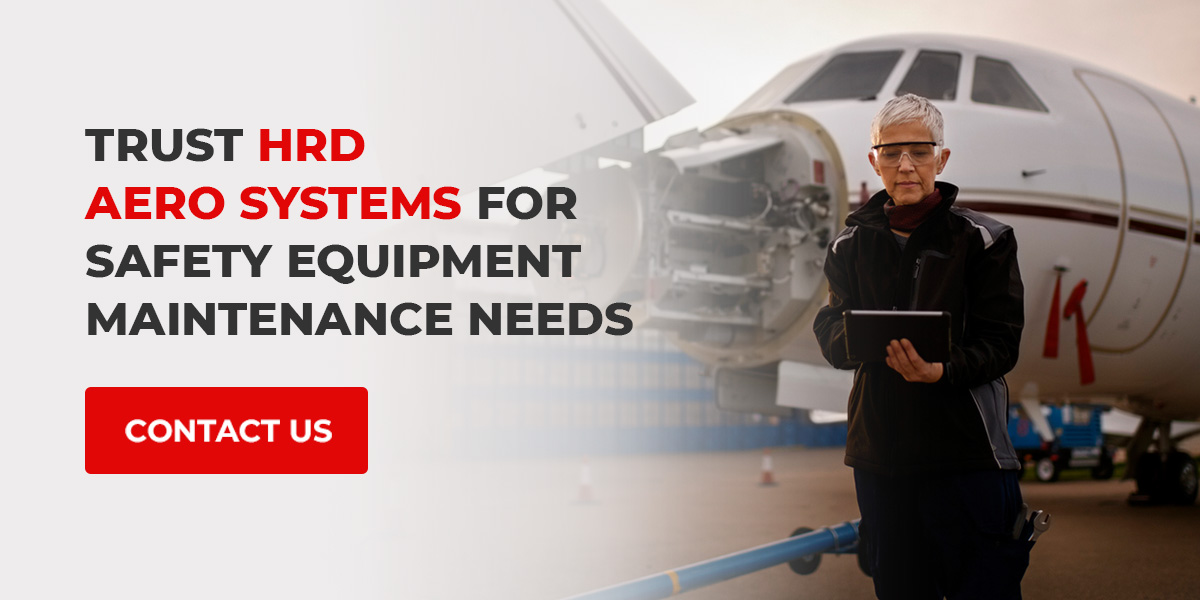
Maintaining a private jet is essential for safe operation, legal compliance and aircraft longevity. To keep your aircraft in top shape, it’s important to understand necessary maintenance tasks, when to perform them and when to schedule expert inspections and service.
Importance of Private Jet Maintenance
Private jet maintenance is crucial for the following reasons.
FAA Compliance
The Federal Aviation Administration (FAA) enforces aircraft safety regulations that jet owners and operators must comply with. Scheduling routine maintenance and necessary repairs ensures an aircraft is compliant and meets legal requirements for safe flight.
Flight Safety
Aircraft need to be in perfect operating condition to ensure safety. Routine maintenance keeps jets safe so pilots, crews and passengers can rely on them for safe transportation.
Aircraft Reliability
A well-maintained aircraft is reliable. Jet owners and operators who follow a proper maintenance schedule can expect their aircraft to operate reliably and safely. Identifying repair needs before damage occurs prevents downtime, allowing owners and operators to get as much use from their aircraft as possible.
Reduced Repair Needs
Preventive maintenance reduces the repairs your jet requires. Maintaining your jet at the required intervals allows technicians to catch malfunctions and small repair needs before they cause further damage, decreasing the need for large repairs.
Who Performs Private Jet Maintenance?
Trained aircraft technicians must perform most jet maintenance and inspections, but jet owners and operators can handle some maintenance tasks independently. The FAA allows owners and operators to perform the following tasks if they have the experience to do so:
- Engine oil and filter changes
- Wheel bearings greasing
- Interior fabric repairs
- Landing lightbulb changes
- Navigation lightbulb changes
- Landing gear tire changes
- Side window replacement
- Airframe lubrication
- Cover plates, cowlings and fairings patching
- Landing light wiring and navigation light repair
- Oil and air servicing for landing gear shock struts
- Front panel-mounted navigation and communication unit removal and replacement
While you can complete the maintenance tasks listed above, you must hire an expert to perform more complex maintenance. Professional aircraft technicians have the experience and training to conduct inspections and complete maintenance that complies with FAA regulations.
How to Maintain a Private Jet
You can keep your private jet in top condition with the following tips.
1. Change the Oil
You should change your jet’s oil after every 25 hours of flight time if it contains an engine without a filter. If the engine does have a filter, you can change the oil after every 50 hours of flight time. Most jet owners and operators need to perform an oil change every two to four months, but the exact interval depends on how frequently you use your jet.
2. Clean the Interior Regularly
Clean your jet’s interior before or after each flight. Vacuum carpeted areas, and wipe all surfaces with a safe cleaning product. Quality leather cleaning solutions are safe for leather surfaces, helping you extend their life span. You can pre-treat vinyl or fabric seating to protect it from potential spills and dirt. You should also clean the windows with a quality window cleaner. While cleaning the interior, check for grease or oil stains to ensure the aircraft is not leaking.
3. Inspect and Detail the Exterior
Maintain your jet’s exterior with the following tasks:
- Check tire pressure: Check your jet’s tire pressure, and seek professional assistance if necessary. Proper tire pressure ensures safe takeoff and landing, so checking the tire pressure is crucial.
- Clean: Clean your jet’s outer surfaces to remove oxidation, dirt and bugs. You should also apply polish to the windows to protect them and ensure they are properly sealed.
- Wax: Waxing the exterior surfaces protects them from snow and ice.
- Check the drain holes: Use a pipe cleaner to check the fuselage’s drain holes and ensure they are dry. Water can corrode the drain holes, so it’s important they remain clear.
4. Change the Batteries When Necessary
Check the jet’s main battery and replace if it performs below capacity. You should also check the carbon monoxide detector, headset and flashlight batteries. While checking the batteries, inspect the spark plug and replace if necessary.
How Often Do Private Jets Need Maintenance?
Aircraft such as private jets require frequent maintenance for proper operation. You can determine when a jet requires maintenance based on its flight hour intervals. The more frequently a jet flies, the more often it will require inspections and potential repairs.
Performing preventive maintenance allows jet owners to identify and repair aircraft parts before further complications occur. The following maintenance tasks and inspections help a jet operate reliably and safely.
Routine Line Inspections and Ground Transit Inspections
Line or routine maintenance is the most frequent aircraft maintenance requirement. Line maintenance typically consists of pre-flight maintenance, overnight inspections and daily or weekly maintenance checks such as:
- Aircraft condition checks
- Topping engine oil
- Brake disc checks
- Topping hydraulic fluid
- Checking and inflating tires if necessary
- Windshield check
Operators or technicians must also perform some maintenance following each ground transit. A ground transit inspection involves a standard exterior inspection and aircraft system servicing.
120 to 150 Flight Hours
An aircraft requires an A inspection each time it completes 120 to 150 flight hours. During an A inspection, technicians check an aircraft’s general condition. Aircraft A inspections consist of the following visual checks:
- Airframe
- Powerplant
- Avionics
- Accessories
750 Flight Hours
An aircraft B inspection is required each time an aircraft completes 750 flight hours. The B inspection covers the following checks:
- All A inspection checks
- Operational check
- Fluid servicing
- Lubrication
- Panels
- Cowlings
3,000 Flight Hours
An aircraft requires a C inspection after it completes 3,000 flight hours. Technicians complete the following checks during a C inspection:
- All A and B inspection checks
- Airframe check
- Engine and accessories inspection
- Heavy lubrication
- Corrosion prevention through part of the corrosion prevention program
- Flight control calibration
- Internal mechanism tests
- Service bulletin requirement fulfillment
20,000 Flight Hours
Every 20,000 flight hours, an aircraft requires a D inspection. Professionals remove the cabin’s interiors and complete a thorough structural inspection. They strip the aircraft’s shell so they can rebuild the interior.
Unscheduled Maintenance
Aircraft parts and components may require servicing outside scheduled maintenance hours. Technicians perform ad-hoc maintenance when a flight requires repairs or parts replacements. A technician should identify malfunctions before parts become unserviceable.
Private Jet Maintenance Cost
Maintenance costs vary widely for private jets. The cost of maintaining a private jet depends on many factors, such as:
- The jet’s condition
- The jet’s age
- Safety equipment age and condition
- How frequently you fly the jet
Aircraft Safety Equipment Maintenance
An aircraft’s safety equipment is crucial in emergencies, so it must always be in good condition. Contact a professional aircraft maintenance service provider to inspect and repair the following safety equipment.
Fire Extinguishers
Fire extinguishers require regular maintenance to ensure their parts and expelling agents work properly. Frangible and hermetically sealed bottles require re-hydrostatic cylinder testing every five years, and portable fire extinguishers typically require maintenance every six years. An aircraft equipment technician has the experience and training to check the following fire extinguisher components:
- Weldment
- Fire extinguishing agents
- Discharge valves
- Pressure switch
- Squib or cartridge
- Rupture plug or disc
- Pressure indication gauge
- Fill fitting
Oxygen Systems
Aircraft oxygen systems maintain safe cabin pressure and provide supplemental oxygen when necessary. Oxygen system inspections and repairs ensure these systems operate efficiently. Professional technicians perform hydrostatic testing and check oxygen cylinders for corrosion and stress cracks. You should schedule testing every five years for 3AA cylinders or every three years for 3HT cylinders and composite cylinders.
Inflatables
Inflatable evacuation devices must be in good condition so they are available during an emergency evacuation. Life vests, evacuation slides, life rafts and helicopter floats are crucial for aircraft safety. Professional inspection and maintenance ensures inflatable safety devices are tear-free and leak-free so you can depend on them to inflate when necessary. You should schedule professional maintenance for inflatable safety devices every three years.
Automated External Defibrillators (AEDs)
Automated external defibrillators (AEDs) allow flight crews and passengers to respond when medical emergencies occur during flights. Ensure your aircraft contains a reliable AED so you can handle any of these emergencies. It’s also important to change the defibrillator pads every two years to ensure they operate properly.
How to Choose a Maintenance Provider
Private jet maintenance companies must provide services that comply with FAA regulations. In addition to FAA compliance, you should choose a maintenance provider that offers the following:
- Various types of safety equipment maintenance and inspection services
- Quality parts
- Service for different types of private jet safety equipment
- Plenty of experience working with private jet safety equipment
- A promise to prioritize safety
Trust HRD Aero Systems for Safety Equipment Maintenance Needs
With over three decades of experience and a wide variety of services, HRD Aero Systems can help maintain your private jet‘s safety equipment. We offer world-class service and solutions to help you comply with government regulations, keep your aircraft safe and extend your safety equipment’s life span. Contact HRD today to learn more about our aircraft on ground (AOG) services.


